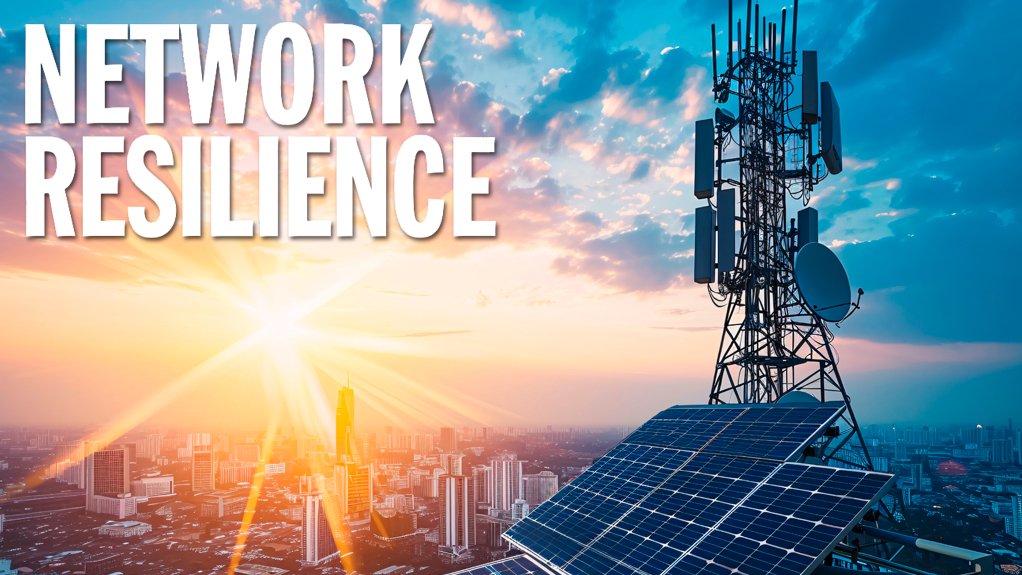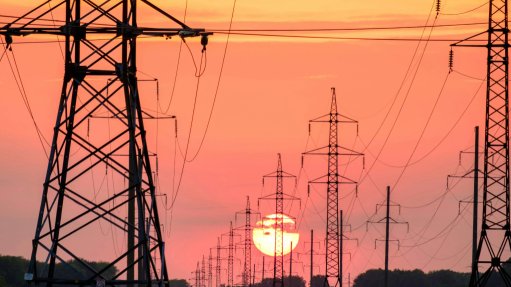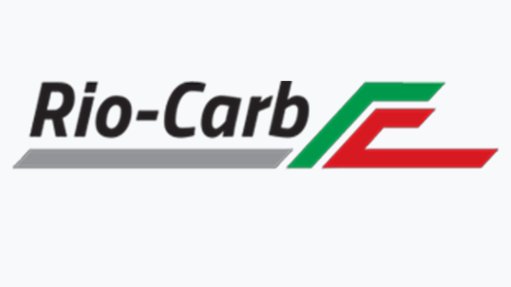Telcos invest billions to protect networks from theft, power cuts and climate risks
South Africa’s telecommunications groups have struggled to maintain seamless communications amid challenges such as loadshedding and power outages, as well as theft and vandalism.
They have had to strike a balancing act by taking extraordinary measures to mitigate this situation, changing the way networks operate and respond to provide consistent and reliable communications services to customers, while targeting various sustainability and net-zero ambitions.
Over the past few years, mobile operators have invested billions of rands in battery, generator and alternative backup power solutions at numerous base station sites across South Africa to enhance network resilience.
While loadshedding has been suspended since March 26, the companies continue to face prolonged unplanned outages and staggered load reductions across metropolitans and, despite efforts to “harden” sites to protect them against theft and vandalism, the rising number of incidents continues to be a threat to connectivity.
Collectively, the challenges are disrupting network reliability and affecting the various groups’ bottom line, operating costs and capital expenditure (capex).
Vodacom South Africa CEO Sitho Mdlalose tells Engineering News & Mining Weekly that, over the last four years, Vodacom has invested over R4.5-billion from its existing capex envelope to ensure network resilience, install power solutions, including solar, batteries and mobile and static generators, besides others, and boost security features.
However, the journey has not been straightforward, with seen and unseen costs encountered, as the company deployed power backup on sites, only to face further uncertainty with power outages, which makes planning and forecasting difficult. Additionally, increasing incidents of theft and vandalism, with network sites facing upwards of 700 attacks a month, have compounded the challenges.
“We battled the realities of putting in solutions and then facing theft and vandalism; it is theft of batteries, mobile generators and increasingly expensive fuel, besides others, and, owing to increased vandalism, maintenance call-outs are much higher.”
These costs built up and can be seen on the income statements of all of South Africa’s telecommunications groups, he says.
“The capital investment that could have been invested in 5G roll-out, rural coverage expansion and reducing network congestion is instead spent on network resilience to achieve the exact same result you would have achieved absent of loadshedding without having spent that R4-billion.”
MTN and Telkom have also spent billions of rands to mitigate the challenges.
MTN South Africa head of network operations Nontuthuzelo Gugushe told Engineering News & Mining Weekly that MTN embarked on a network resilience project to mitigate connectivity disruptions and ensure continuity in network availability during loadshedding periods, installing everything from fast-charging lithium-ion batteries to rectifiers.
“We added a lot of generators to the network, both static and mobile generators. Static generators were installed on strategic sites that interconnect other towers, while the mobile generators assisted the company in agility, deploying when there is a need.”
As part of the resilience project, the company integrated smart technology and intelligence to remotely monitor network systems, battery levels and power failures, which allows MTN to be proactive and be able to react before a site fails.
While loadshedding has eased, one of the unseen elements is increased faults within the national electricity grid, exacerbated by infrastructure damage from storms and flooding, which have seen many areas experience power outages of up to two weeks. This is in addition to ongoing load reduction.
Mdlalose says that the suspension of loadshedding over the past few months has enabled the group to reduce its fuel consumption, which had increased over fivefold.
However, while welcome, the suspension introduces complexities in the system, as there is uncertainty about whether loadshedding will return, when it might occur and at what stages. The absence of reliable long-term forecasts causes planning difficulties for operators.
The suspension has enabled MTN to review potential opportunities and “fine-tune” some of the system settings, including how fast batteries are charged and how much additional capacity is required, as well as the parameters on rectifiers, by reviewing the consumption at each tower, based on the technologies that are on the site, to unlock a highly optimised operation in the network, Gugushe says.
Meanwhile, Telkom has also developed an energy strategy to mitigate the severe effects of prolonged loadshedding – or any possible business interruption incidents that would significantly impact contractual obligations and customer experience – and improve the resilience of its mobile and fixed networks.
The company, through aggressively installing solar and lithium-ion batteries at key sites, decommissioning legacy equipment and implementing various energy-efficiency initiatives for energy resilience and diesel optimisation, is working to reduce dependence on nonrenewable energy by identifying sustainable and cleaner energy options to complement its current portfolio of energy sources.
The group started configuring its sites by introducing solar energy as the primary backup form of energy and upgraded backup batteries to lithium-ion to increase their capacity, time to recharge and longevity to mitigate the cost of ensuring network availability and stability.
“We have installed and replaced more than 5 500 lead-acid batteries with lithium-ion batteries at our mobile and exchange sites to date. Along with the establishment of solar photovoltaic (PV) plants, we will continue to deploy lithium-ion batteries and solar panels in new sites, with 1 500 sites planned,” Telkom highlighted in its financial results for the year ended March 31.
Broadening Sustainability
Many of the mitigation measures are linked to other ambitions, such as energy savings, net-zero ambitions and sustainability goals, which the companies have been undertaking over the past few years.
Vodacom has an ambition of sourcing 100% of its electricity demand from renewable- energy sources by 2025, starting with the installation of a 6 MWp solar PV plant at its Midrand Campus, with solar power feeding into the building and data centres, as well as powering nearby traffic lights.
The Midrand Campus solar plant generates about 10.8 GWh/y, which is about 21% of the headquarters’ power consumption, with the focus of the company also turning to consumption across its 15 000 sites.
Vodacom embarked on a trial programme at the plant, testing a wheeling platform through Vodacom’s first-of-its-kind virtual wheeling agreement, which was signed with State-owned power utility Eskom on August 30, 2023.
Over the past six months, Vodacom has been using the solar park to feed data through the wheeling platform, which was developed by Vodacom subsidiary Mezzanine to be integrated into Eskom’s systems to reconcile data from renewable-energy plants, in order to manage the offset credits owing to a party that would wheel energy into the grid.
Further, Vodacom is ready to commercially sign an independent power producer (IPP) under the agreement, and is nearing the appointment stage of a request for proposal leveraging a combination of wind and solar.
“We will have about 30% of our consumption sourced from those renewable plants that we are signing in phase one, and we will continue to build on that as we go.”
The group is working on additional power purchase agreements (PPAs), and exploring innovative hydrogen fuel cell solutions, besides others, to increase the amount of energy from renewable sources in other locations, in line with its detailed net-zero roadmap to reach a 100% reduction in scope 1 and 2 greenhouse-gas emissions by 2035. The group’s solar park at the Midrand Campus saves an estimated 10 908 t/y in CO2 equivalent.
Vodacom has further optimised its network to improve energy efficiency, including by using subsidiary IoT.nxt’s energy saving solutions and using batteries to reduce diesel reliance on generators.
MTN is also implementing measures to develop “green sites”, ensure power savings and reduce CO2, Gugushe comments, adding that the group has already optimised its network to use batteries first during a power failure before the generators start, allowing the company to not only save on fuel costs, but also reduce CO2 emissions.
“Our generators run less than they used to, owing to smart technologies monitoring the network and the hybrid configuration on our sites.”
This is part of several initiatives, which include its 4.9 MW solar park at its headquarters in Roodepoort, which houses five different generation technologies: concentrated solar power, battery storage, gas trigeneration and diesel generators.
The group is looking at further opportunities to create hybrid configurations, expand its adoption of energy efficient technologies throughout its network and using renewable energy, including solar solutions, across its operations, with some of its sites already operating solely on solar during the day and batteries at night.
“This contributes to our sustainability goals.”
With loadshedding currently suspended, MTN is further optimising its settings on the sites, undertaking upgrades and monitoring the charging and discharging rate of the lithium-ion batteries to ensure autonomy.
As part of its suite of climate change strategies, MTN is pursuing ambitions of achieving net-zero greenhouse-gas emissions by 2040, ten years ahead of industry guidelines, after signing a pledge with the Science-Based Targets Initiatives (SBTi) in 2021.
Telkom, meanwhile, continues its own SBTi-aligned ambitions of becoming carbon neutral by 2035 and net zero by 2040, through the implementation of several technologies that maximise energy security and decarbonisation while optimising utilities and diesel costs. The solutions deployed include solar PV, lithium-ion batteries and other energy-efficiency interventions.
Telkom is focused on driving energy efficiency and providing alternative energy to reduce its emissions.
Article Enquiry
Email Article
Save Article
Feedback
To advertise email advertising@creamermedia.co.za or click here
Comments
Press Office
Announcements
What's On
Subscribe to improve your user experience...
Option 1 (equivalent of R125 a month):
Receive a weekly copy of Creamer Media's Engineering News & Mining Weekly magazine
(print copy for those in South Africa and e-magazine for those outside of South Africa)
Receive daily email newsletters
Access to full search results
Access archive of magazine back copies
Access to Projects in Progress
Access to ONE Research Report of your choice in PDF format
Option 2 (equivalent of R375 a month):
All benefits from Option 1
PLUS
Access to Creamer Media's Research Channel Africa for ALL Research Reports, in PDF format, on various industrial and mining sectors
including Electricity; Water; Energy Transition; Hydrogen; Roads, Rail and Ports; Coal; Gold; Platinum; Battery Metals; etc.
Already a subscriber?
Forgotten your password?
Receive weekly copy of Creamer Media's Engineering News & Mining Weekly magazine (print copy for those in South Africa and e-magazine for those outside of South Africa)
➕
Recieve daily email newsletters
➕
Access to full search results
➕
Access archive of magazine back copies
➕
Access to Projects in Progress
➕
Access to ONE Research Report of your choice in PDF format
RESEARCH CHANNEL AFRICA
R4500 (equivalent of R375 a month)
SUBSCRIBEAll benefits from Option 1
➕
Access to Creamer Media's Research Channel Africa for ALL Research Reports on various industrial and mining sectors, in PDF format, including on:
Electricity
➕
Water
➕
Energy Transition
➕
Hydrogen
➕
Roads, Rail and Ports
➕
Coal
➕
Gold
➕
Platinum
➕
Battery Metals
➕
etc.
Receive all benefits from Option 1 or Option 2 delivered to numerous people at your company
➕
Multiple User names and Passwords for simultaneous log-ins
➕
Intranet integration access to all in your organisation





















